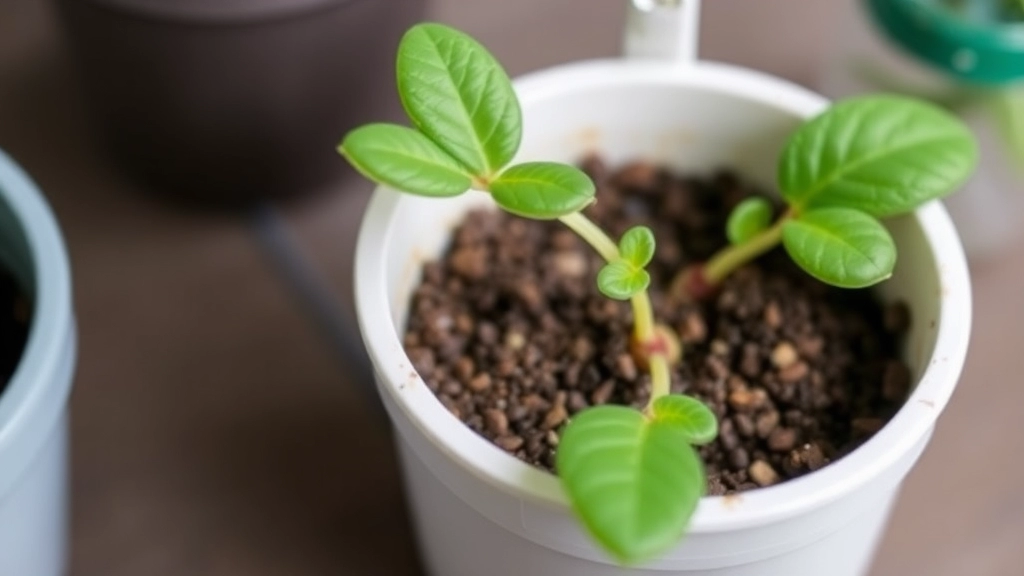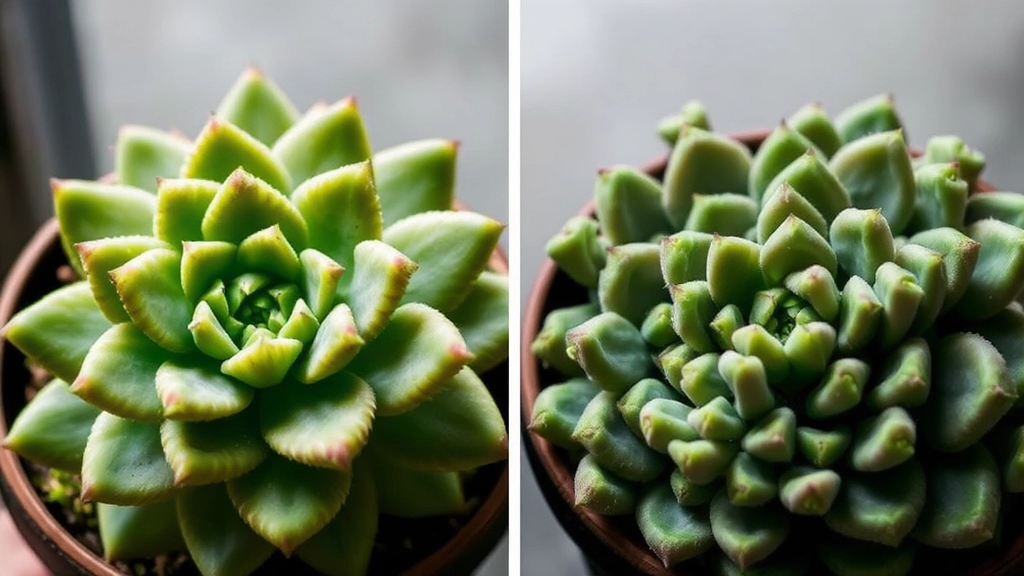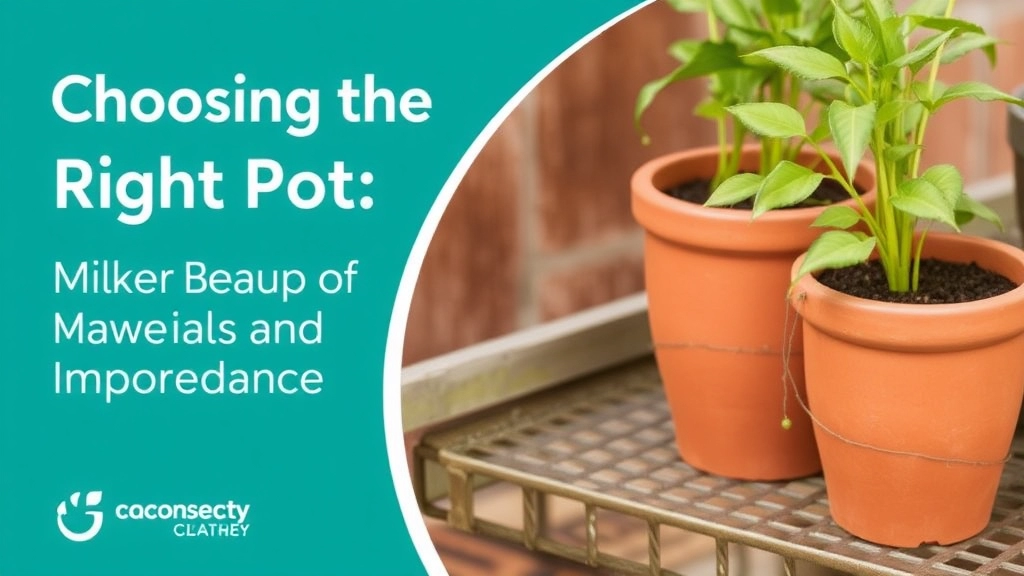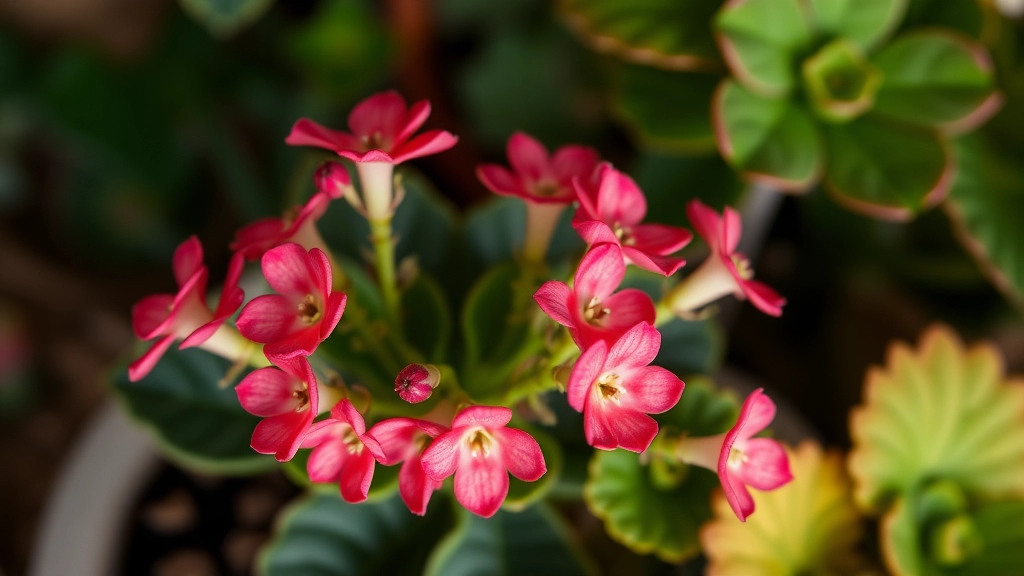Welcome, plant enthusiasts!
Today, we’re diving into the fascinating world of the kalanchoe mother of thousands flower. This unique succulent, known for its prolific reproduction, is a favorite among indoor gardeners. In this article, we’ll explore everything from identifying this peculiar plant to mastering its care and propagation.
Get ready to discover the secrets of this living “cloning machine” – from its light and water needs to managing its invasive tendencies. Whether you’re a seasoned plant parent or a curious beginner, you’ll find valuable tips to help your Mother of Thousands thrive. Let’s embark on this green adventure and unlock the potential of this remarkable plant!
How to Identify the Mother of Thousands Flower
Alright, let’s dive into identifying the Mother of Thousands flower. This plant’s a real head-turner, and once you know what to look for, you’ll spot it a mile away.
Ever seen a plant that looks like it’s got tiny babies growing on its leaves? That’s the Mother of Thousands for you. Here’s how to spot it:
- Leaves: Big, fleshy, and shaped like arrowheads. They’re usually bluish-green and can grow up to 6 inches long.
- Plantlets: The real giveaway. Tiny replicas of the parent plant grow along the leaf edges. It’s like nature’s own cloning machine!
- Growth habit: Tall and upright, often reaching 3 feet or more.
- Stem: Thick and sturdy, supporting those hefty leaves.
- Flowers: Rare, but when they do show up, they’re pinkish-lavender and bell-shaped.
Now, I’ve seen folks confuse this plant with its cousin, the Mother of Millions. Easy mistake, but here’s the difference: Mother of Thousands has wider leaves with plantlets only on the edges, while Mother of Millions has narrow leaves with plantlets all over.
Pro tip: If you’re still unsure, snap a pic and use a plant ID app. They’re getting scary good these days!
Remember, this plant’s a bit of a drama queen. It’ll take over your garden if you let it, so keep an eye on those plantlets. They drop off easily and boom – you’ve got a whole new plant.
In my experience, the Mother of Thousands is a conversation starter. I’ve got one in my office, and every visitor asks about the “plant with babies”. It’s a great ice-breaker and makes for an interesting indoor plant.
So, there you have it. Spot those telltale plantlets, and you’ve found yourself a Mother of Thousands. Next up, we’ll chat about how to keep this unique plant happy and thriving. Trust me, it’s easier than you might think!
Light Requirements for Optimal Growth
Let’s talk about getting your Mother of Thousands the right light.
These succulents are sun-lovers, but they’re not divas about it.
Bright, indirect light is their sweet spot.
Think of a spot near a window, but not right in the sun’s path.
Too much direct sunlight? You might see scorched leaves.
Not enough light? Your plant could get leggy and weak.
Quick Light Guide:
- Morning sun: Perfect
- Afternoon sun: A bit too harsh
- North-facing window: Might need a grow light boost
- South-facing window: Ideal, with a sheer curtain
I’ve found that my Mother of Thousands thrives on a east-facing windowsill.
It gets that morning glow without the afternoon burn.
Remember, these plants are adaptable.
They’ll tolerate lower light, but they won’t thrive.
If your plant’s stretching out, it’s crying for more light.
Move it gradually to a brighter spot to avoid shock.
Bottom line: Bright, indirect light is key for a happy Mother of Thousands care.
Best Soil Mix and Potting Tips
Alright, let’s dive into the best soil mix and potting tips for your Mother of Thousands plant. Trust me, getting this right can make or break your plant’s growth.
The Dirt on Soil Mix
First things first, Mother of Thousands isn’t picky, but it does have preferences. Here’s what I’ve found works best:
- A well-draining mix is key. Think cactus or succulent soil.
- If you’re mixing your own, aim for:
- 2 parts potting soil
- 1 part perlite or pumice
- 1 part coarse sand
This combo gives the roots room to breathe while holding just enough moisture.
Potting Like a Pro
Now, let’s talk pots. Here’s the deal:
- Choose a pot with drainage holes. Non-negotiable.
- Terracotta pots are my go-to. They wick away excess moisture.
- Size matters. Go for a pot that’s about 1-2 inches wider than the root ball.
The Potting Process
Ready to get your hands dirty? Here’s how to pot your Mother of Thousands:
- Fill the pot about 1/3 with your soil mix.
- Place the plant in, making sure it’s at the same depth as before.
- Fill in around the roots, gently tamping down.
- Leave about an inch of space at the top for watering.
Pro Tip
Add a layer of small pebbles or gravel at the bottom of the pot. It’s not just for looks – it helps with drainage and prevents soil from escaping through the holes.
Remember, Mother of Thousands likes it snug but not suffocating. Give it room to grow, but don’t go overboard with pot size.
Getting the soil mix and potting right sets the stage for a thriving Mother of Thousands. It’s all about balance – just like most things in life, right?
Watering Guidelines: When and How to Water
Let’s talk about watering your Mother of Thousands, shall we?
This plant’s a bit of a drama queen when it comes to water.
Too much? You’re in trouble.
Too little? Also trouble.
So, how do we get it just right?
Here’s the deal:
- Water when the top inch of soil feels dry
- Use the “soak and dry” method
- Avoid getting water on the leaves
Sounds simple, right? But there’s more to it.
When to Water
I always check the soil before watering.
Stick your finger in about an inch deep. If it’s dry, it’s watering time.
If it’s still damp, hold off.
How to Water
The “soak and dry” method is your best mate here.
- Water thoroughly until it runs out the drainage holes
- Let the soil dry out completely before watering again
This mimics the plant’s natural habitat. Clever, eh?
Pro Tip: Use room temperature water. Cold water can shock the roots.
Common Watering Mistakes
- Overwatering: This is the big one. More plants die from too much water than too little.
- Watering on a schedule: Plants don’t wear watches. Water when they need it, not when your calendar says so.
- Using a spray bottle: This plant needs a proper drink, not a mist.
Remember, Mother of Thousands is a succulent. It’s built to store water.
Better to underwater than overwater. If in doubt, wait another day.
Watering in Different Seasons
Summer: More frequent watering
Winter: Less frequent watering
Adjust based on your home’s temperature and humidity.
Bottom line: Get the watering right, and your Mother of Thousands will thrive.
It’s not rocket science, but it does take a bit of attention.
Keep an eye on your plant, and you’ll soon get a feel for when it needs a drink.
If you’re interested in other Kalanchoe varieties, you might want to check out the Kalanchoe tomentosa varieties for some unique and interesting options.
Temperature and Humidity Tolerance
Alright, let’s chat about how tough these Mother of Thousands plants really are when it comes to temperature and humidity. Trust me, they’re not as fussy as some other houseplants you might’ve dealt with.
Temperature Sweet Spot
These succulents are pretty chill (pun intended) when it comes to temperature:
- They thrive in temps between 16°C to 29°C (60°F to 85°F)
- Can handle short bursts of heat up to 35°C (95°F)
- Might sulk a bit below 10°C (50°F)
But here’s the kicker – they’re not fans of frost. If you live somewhere that gets proper cold, you’ll want to bring your Mother of Thousands indoors when winter hits.
Humidity: Not a Big Deal
Unlike some drama queen plants that need a personal humidifier, Mother of Thousands is pretty laid-back about humidity:
- They’re cool with average indoor humidity levels
- Can handle dry air like a champ
- Don’t need misting or pebble trays
But watch out – if it’s too humid, you might run into issues with rot. Nobody wants that.
Real Talk: My Experience
I’ve got a Mother of Thousands in my office, right next to a radiator. It’s been there for two years, and let me tell you, it’s thriving. The air gets dry as heck in winter, but this plant doesn’t even flinch.
Pro Tip: If you’re worried about temperature swings, keep your Mother of Thousands away from drafty windows or air con units. They prefer a steady environment, just like we do.
Remember, these plants are survivors. They’ve adapted to handle a range of conditions, which is why they’ve earned that “invasive” reputation. But for us indoor gardeners, that’s a bonus – it means they’re tough as nails and easy to care for.
So, don’t stress too much about perfect conditions. As long as you’re comfortable, chances are your Mother of Thousands will be too. Just keep an eye out for any signs of stress, like leaf drop or discolouration, and you’ll be golden.
Fertilization: When and What to Feed

Alright, let’s talk about feeding your Mother of Thousands.
It’s not a fussy eater, but it does need some grub to thrive.
Here’s the lowdown on fertilizing this unique plant:
When to Feed:
- Spring and summer are prime feeding times
- Hold off during autumn and winter – it’s nap time for the plant
What to Feed:
- Go for a balanced, water-soluble fertilizer
- Look for a 10-10-10 or 14-14-14 NPK ratio
- Cactus or succulent-specific fertilizers work great too
How Often:
- Once a month during growing season is plenty
- Less is more – don’t overdo it!
Pro Tips:
- Dilute the fertilizer to half strength
- Always water the plant before fertilizing
- If leaves turn yellow, you might be overfeeding
Remember, Mother of Thousands isn’t a big eater.
It’s better to underfeed than overfeed.
If your plant looks healthy and is sprouting plantlets, you’re doing just fine.
Keep it simple, and your Mother of Thousands will thank you with lush growth.
Pruning and Maintenance for a Healthy Mother of Thousands
Let’s chat about keeping your Mother of Thousands in tip-top shape, shall we? I’ve learned a thing or two about pruning and maintenance that’ll make your plant thrive like never before.
Snip, Snip: The Basics of Pruning
First things first, pruning isn’t just about making your plant look pretty (though that’s a nice bonus). It’s about:
- Encouraging new growth
- Removing dead or damaged bits
- Controlling the plant’s size
- Preventing it from taking over your entire house (trust me, it’ll try)
When to Prune?
Here’s the deal: Mother of Thousands doesn’t need much pruning. But when you do, aim for:
- Spring or early summer (when it’s growing like crazy)
- Any time you spot dead or yellowing leaves
- When it’s getting too big for its britches (or pot)
How to Prune: The Down and Dirty
- Grab some clean, sharp scissors or pruning shears.
- Cut off any dead, yellowing, or damaged leaves at the base.
- If it’s getting too tall, snip off the top growth just above a leaf node.
- For a bushier plant, pinch off the tips of stems.
Maintenance: Keeping Your Plant Happy
Beyond pruning, here’s what you need to do to keep your Mother of Thousands thriving:
- Dust the leaves: Use a soft, damp cloth to wipe down leaves every few weeks. It helps the plant breathe better.
- Check for pests: Keep an eye out for mealybugs or spider mites. If you spot any, treat them ASAP.
- Rotate the pot: Give it a quarter turn every week so all sides get equal light.
- Remove plantlets: Unless you want a house full of Mother of Thousands (no judgment), pluck off those little plantlets regularly.
The Secret Sauce: Consistency
Here’s the thing: Mother of Thousands isn’t high-maintenance, but it does appreciate consistency. Set a reminder on your phone if you need to. A little regular TLC goes a long way.
Remember, pruning and maintenance for your Mother of Thousands isn’t rocket science. It’s about paying attention and giving your plant what it needs. Do that, and you’ll have a healthy, happy plant that’ll be the envy of all your plant-loving mates.
Propagation Techniques: Growing New Plants from Plantlets

Ever wondered how to grow more Mother of Thousands plants? It’s a breeze!
These plants are like nature’s little cloning machines.
They’re always dropping tiny plantlets, ready to grow into new plants.
Here’s how you can turn those mini-mes into full-fledged plants:
1. Spotting the Right Plantlets
- Look for plantlets along the leaf edges.
- They should be about 1-2 cm long with tiny roots.
2. Harvesting Time
- Gently pluck the plantlets off the mother plant.
- No need for fancy tools – your fingers will do!
3. Prepping the Soil
- Use a well-draining potting mix.
- Think cactus soil with a bit of perlite mixed in.
4. Planting the Babies
- Just lay the plantlets on top of the soil.
- Don’t bury them – they’ll sort themselves out.
5. Watering Wisdom
- Mist the soil lightly.
- Keep it damp, not soaking.
6. Finding the Sweet Spot
- Place the pot in bright, indirect light.
- A warm spot works wonders.
7. Patience is Key
- In a few weeks, you’ll see roots growing.
- Soon after, new leaves will pop up.
Pro Tip: Don’t toss the fallen plantlets from your pot.
They’re like free plants waiting to happen!
Remember, Mother of Thousands can be a bit of a garden bully.
Keep an eye on where you plant them outdoors.
Propagating these plants is dead easy.
Before you know it, you’ll have more Mother of Thousands than you know what to do with!
Got any propagation tricks up your sleeve? I’d love to hear them! If you’re interested in other Kalanchoe varieties, check out the Kalanchoe beharensis varieties for some unique options.
Managing the Invasive Nature of the Plant
Let’s chat about the Mother of Thousands and its tendency to take over. This plant’s a bit of a rebel, always looking to spread its wings (or should I say, plantlets?).
Here’s the deal: if you’re not careful, this green beauty can quickly become the boss of your garden or even your neighbour’s. But don’t worry, I’ve got some tricks up my sleeve to keep it in check.
Why It’s a Bit of a Handful
First off, let’s get why this plant’s such a handful:
- It drops baby plants (plantlets) like confetti
- These little ones root super easily
- It can spread faster than gossip in a small town
Keeping It Under Control
Now, here’s how we can show this plant who’s really in charge:
- Pot it up: Keep it in a container. This is your first line of defence.
- Catch those babies: Regularly check for fallen plantlets and scoop ’em up.
- Trim and tidy: Give it a haircut now and then. Snip off those plantlet-producing leaves.
- Watch where you put it: Keep it away from other plants it might bully.
- Be picky with soil: Use a well-draining mix to limit its spread.
When It’s Already Gone Wild
If your Mother of Thousands has already staged a takeover, don’t panic. Here’s what to do:
- Pull out the extras: Yank out any plants that have spread where you don’t want them.
- Be thorough: Check every nook and cranny for sneaky plantlets.
- Keep at it: This isn’t a one-time job. You’ll need to stay on top of it.
A Word of Caution
Remember, in some places, this plant’s considered a proper pest. Always check local regulations before planting it outdoors. You don’t want to be that person who introduces an invasive species to the neighbourhood!
By keeping these tips in mind, you can enjoy your Mother of Thousands without letting it run the show. It’s all about finding that sweet spot between letting it thrive and keeping it in line. Trust me, with a bit of effort, you’ll be the one calling the shots in your garden, not this cheeky plant!
Common Problems and How to Avoid Them

Let’s chat about the Mother of Thousands and its quirks, shall we?
These plants can be a bit dramatic, but don’t worry â I’ve got your back.
Here’s the lowdown on common issues and how to dodge ’em:
Overwatering: The Silent Killer
- Spot it: Yellowing leaves, mushy stems
- Fix it: Let the soil dry out between waterings
- Pro tip: Stick your finger in the soil â if it’s damp, hold off on watering
Leaf Drop: The Naked Plant Syndrome
- Cause: Usually stress from temperature changes or overwatering
- Solution: Stabilise the environment and adjust your watering routine
- Remember: These plants are tough cookies â they’ll bounce back
Pests: Uninvited Guests
- Common culprits: Mealybugs, spider mites
- Battle plan: Wipe leaves with neem oil or insecticidal soap
- Prevention: Regular checks and good air circulation
Etiolation: The Stretchy Plant Problem
- Sign: Leggy growth, pale leaves
- Fix: Move to a brighter spot
- Hack: Rotate the plant regularly for even growth
Root Rot: The Underground Menace
- Symptoms: Wilting, despite moist soil
- Action: Remove from pot, trim rotted roots, repot in fresh, dry soil
- Key: Always use well-draining soil and pots with drainage holes
Frost Damage: The Winter Woe
- Look for: Black, mushy leaves after cold exposure
- Remedy: Move to a warmer spot, trim damaged parts
- Remember: These plants hate the cold â keep ’em cosy
By keeping an eye out for these issues, you’ll be a Mother of Thousands pro in no time.
Remember, prevention is better than cure â give your plant the right care, and it’ll thrive.
Got any plant problems you’re battling? Drop a comment, and let’s sort it out together! If you’re interested in other Kalanchoe varieties, check out the Kalanchoe blossfeldiana succulent for a beautiful flowering option.
Overwintering: How to Care for the Plant in Colder Months
Alright, let’s talk about keeping your Mother of Thousands happy when the temperature drops. I’ve been there, frantically trying to save my plants from the cold, and I’ve learned a thing or two about overwintering these beauties.
First things first: Mother of Thousands isn’t a fan of the cold. It’s like that friend who’s always complaining about chilly weather – you know the type. So, when winter rolls around, we’ve got to step up our game.
Here’s the deal:
- Bring it inside, pronto!
As soon as the temp starts flirting with 10°C (50°F), it’s time to bring your plant indoors. Don’t wait for frost – that’s a death sentence for these tropical divas. - Find the perfect spot
Look for a bright, warm place in your home. Near a south-facing window is ideal, but keep it away from drafty areas or heating vents. You want to mimic its natural habitat as much as possible. - Cut back on watering
During winter, your Mother of Thousands goes into a bit of a snooze mode. It’s not growing as much, so it doesn’t need as much water. I usually water mine about half as often as I do in summer. - Keep an eye on humidity
Indoor heating can dry out the air, which these plants hate. Consider using a pebble tray or a small humidifier to keep the air moist. - Skip the fertiliser
Your plant’s not doing much growing in winter, so it doesn’t need the extra food. Save the fertiliser for spring when it’s ready to party again. - Watch for pests
Indoor plants can be more susceptible to pests. Keep an eye out for any unwanted visitors and deal with them quickly if they show up. - Provide some extra light
If you’re in a particularly gloomy area, you might want to consider some grow lights to supplement natural light. It’s like giving your plant a bit of artificial sunshine.
Remember, overwintering is all about survival, not thriving. Your Mother of Thousands might look a bit sad during winter, but don’t panic. As long as it’s not dead, it’ll bounce back when spring comes around.
The key to successful overwintering is paying attention. Check on your plant regularly, adjust care as needed, and before you know it, you’ll be back to enjoying its lush growth in the warmer months.
And hey, if you’re struggling with overwintering your Mother of Thousands, don’t beat yourself up. It’s a learning process, and even experienced gardeners have their share of winter casualties. Just keep at it, learn from your mistakes, and you’ll get there.
Differences Between Mother of Thousands and Mother of Millions

Ever mixed up Mother of Thousands and Mother of Millions? You’re not alone.
These two plants are like cousins – similar, but with their own quirks.
Let’s break it down:
Mother of Thousands (Kalanchoe daigremontiana):
- Bigger leaves, more triangular
- Plantlets grow along leaf edges
- Usually one main stem
Mother of Millions (Kalanchoe delagoensis):
- Skinnier leaves, more tube-like
- Plantlets cluster at leaf tips
- Often multiple stems
Both are prolific breeders, but Mother of Millions takes it to the next level.
It’s like comparing a big family to a small village – both have lots of kids, but one’s gone a bit overboard.
The care? Pretty much the same for both.
They’re both drought-tolerant succulents that’ll thrive with minimal fuss.
But here’s the kicker: Mother of Millions is generally more invasive.
If you’re worried about your plant taking over, stick with Mother of Thousands.
Either way, you’re in for a treat. These plants are like nature’s own cloning machines.
Just remember: with great power comes great responsibility. Keep an eye on those plantlets!
If you’re interested in other unique Kalanchoe varieties, you might want to check out the Kalanchoe beharensis ‘Fang’, which has its own distinct characteristics and care requirements.
Benefits of Growing Mother of Thousands Indoors
Ever wondered why Mother of Thousands is such a hit for indoor gardening? Let me spill the beans on why I love having this quirky plant in my home.
First off, it’s a total showstopper. With its unique leaves and those tiny plantlets hanging off the edges, it’s like having a living piece of art. Trust me, your guests will be asking about it non-stop.
But here’s the real kicker – it’s tough as nails. Forget about those fussy plants that need constant attention. Mother of Thousands is like that low-maintenance friend who’s always up for a good time, no matter what.
Here are some more perks that’ll make you want to grab one ASAP:
- Easy peasy care: Water it when you remember, and it’ll still thrive.
- Air purifier: It’s like having a natural air freshener that actually works.
- Stress buster: There’s something zen about watching those little plantlets grow.
- Year-round greenery: No seasonal blues here – it stays lush all year.
- Conversation starter: Trust me, everyone will want to know about your “alien plant”.
But here’s a pro tip: keep it away from pets and kids. Those leaves can be a bit toxic if eaten. Safety first, right?
Now, you might be thinking, “Sounds great, but what about space?” Here’s the deal – you can grow it in pretty much any size pot. Got a tiny flat? No worries, a small pot on your windowsill will do just fine.
And let’s talk propagation. It’s like the plant that keeps on giving. Those little plantlets? They’re basically ready-made new plants. It’s like getting free plants without even trying.
So, if you’re after an indoor plant that’s a bit different, looks cool, and doesn’t need you to have a green thumb, Mother of Thousands is your go-to. It’s the perfect blend of low-effort and high-impact. Give it a shot – your indoor jungle (and your Instagram feed) will thank you.
Choosing the Right Pot: Materials and Drainage Importance

Picking the perfect pot for your Mother of Thousands is crucial, folks.
Let’s chat about why it matters and how to nail it.
First up, size matters.
You want a pot that’s just right – not too big, not too small.
Think Goldilocks, but for plants.
A pot that’s too large can lead to waterlogging, and we don’t want that drama.
Too small? Your plant’s gonna feel cramped and cranky.
Materials Matter
Now, let’s talk materials.
Terracotta’s a solid choice – it’s breathable and helps prevent overwatering.
But plastic works too, especially if you’re prone to forgetting to water.
Drainage is Key
The real MVP here? Drainage holes.
Without ’em, your Mother of Thousands is gonna be swimming, not thriving.
Pro tip: pop a coffee filter over the drainage holes to keep soil in and let water out.
Remember, these plants aren’t fans of wet feet.
So, a well-draining pot is your best mate in keeping your plant happy.
Want to get fancy? Try a self-watering pot.
But be careful – it’s easy to overdo it.
Bottom line: choose a pot that lets excess water escape and your plant will thank you.
Happy potting, plant pals! If you’re interested in other Kalanchoe varieties, check out the Kalanchoe Blossfeldiana for its beautiful blooms and uses.
Rare Flowering: What to Expect When It Blooms
Ever seen a Mother of Thousands flower? It’s a rare sight, but when it happens, it’s pretty cool.
Here’s the deal:
These plants don’t bloom often. Like, really not often.
But when they do? It’s a show.
You’ll spot tall stalks shooting up from the plant.
At the top? Clusters of pinkish-lavender bell-shaped flowers.
They’re small, but they pack a punch visually.
Why’s it so rare?
Well, these plants are busy making babies (those little plantlets) all the time.
They don’t have much energy left for flowering.
Plus, they need perfect conditions to even think about blooming.
So, what can you do to encourage flowering?
- Give it loads of bright, indirect light
- Keep it in a snug spot – they like it warm
- Don’t overwater – let it dry out between waterings
- Feed it with a balanced fertiliser during growing season
But here’s the kicker:
Even if you do all that, there’s no guarantee.
Sometimes, they just decide to flower out of the blue.
It’s like a surprise party for plant lovers.
When it does happen, enjoy it while it lasts.
The flowers aren’t around for long, but they’re a treat when they show up.
Remember, though: the real star of this plant is its unique way of making babies.
So even if you never see a flower, your Mother of Thousands is still pretty special.
Here are some FAQs based on the article content about the Mother of Thousands plant:
Frequently Asked Questions
How do I identify a Mother of Thousands plant?
Look for large, fleshy, bluish-green leaves shaped like arrowheads. The key identifier is tiny plantlets growing along the leaf edges. The plant has a tall, upright growth habit, often reaching 3 feet or more in height.
What are the light requirements for Mother of Thousands?
These plants prefer bright, indirect light. A spot near a window with filtered sunlight is ideal. Morning sun is perfect, but afternoon sun may be too harsh. If using a south-facing window, use a sheer curtain to diffuse the light.
How often should I water my Mother of Thousands?
Water when the top inch of soil feels dry. Use the “soak and dry” method – water thoroughly until it runs out the drainage holes, then allow the soil to dry out completely before watering again. Reduce watering frequency in winter.
What type of soil is best for Mother of Thousands?
Use a well-draining mix, such as cactus or succulent soil. You can make your own by mixing 2 parts potting soil, 1 part perlite or pumice, and 1 part coarse sand.
How do I propagate Mother of Thousands?
It’s easy! Gently pluck plantlets from the leaf edges when they’re about 1-2 cm long with tiny roots. Lay them on top of well-draining soil and mist lightly. Keep the soil damp but not soaking. Roots will grow in a few weeks, followed by new leaves.
Is Mother of Thousands toxic?
Yes, Mother of Thousands is toxic if ingested. Keep it away from pets and children. Always wash your hands after handling the plant.
How can I control the invasive nature of Mother of Thousands?
Keep it in a container to prevent spreading. Regularly remove fallen plantlets. Trim plantlet-producing leaves. Use well-draining soil to limit spread. Check local regulations before planting outdoors, as it’s considered invasive in some areas.
Does Mother of Thousands flower often?
No, flowering is rare in Mother of Thousands. When it does flower, you’ll see tall stalks with clusters of pinkish-lavender bell-shaped flowers. Providing optimal care may encourage flowering, but there’s no guarantee.

